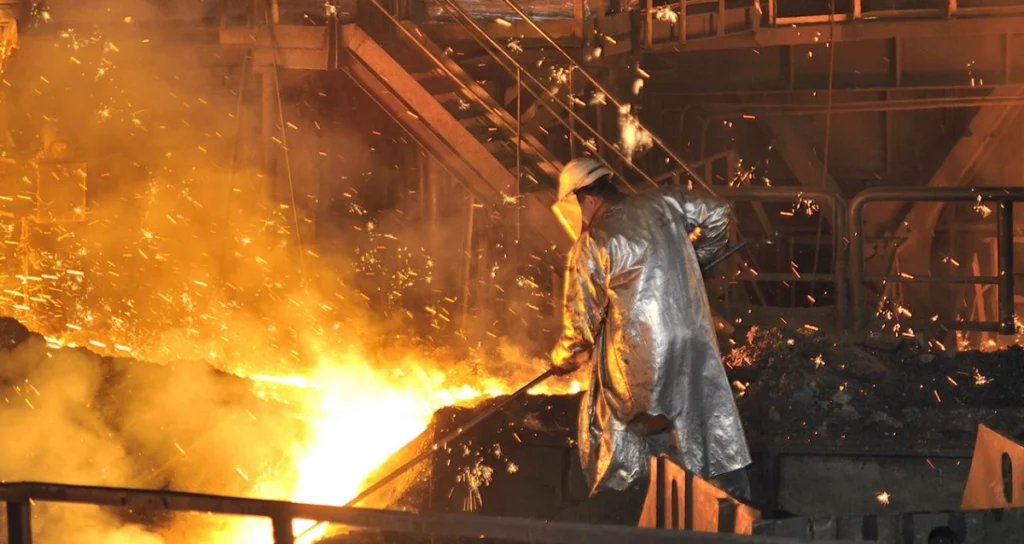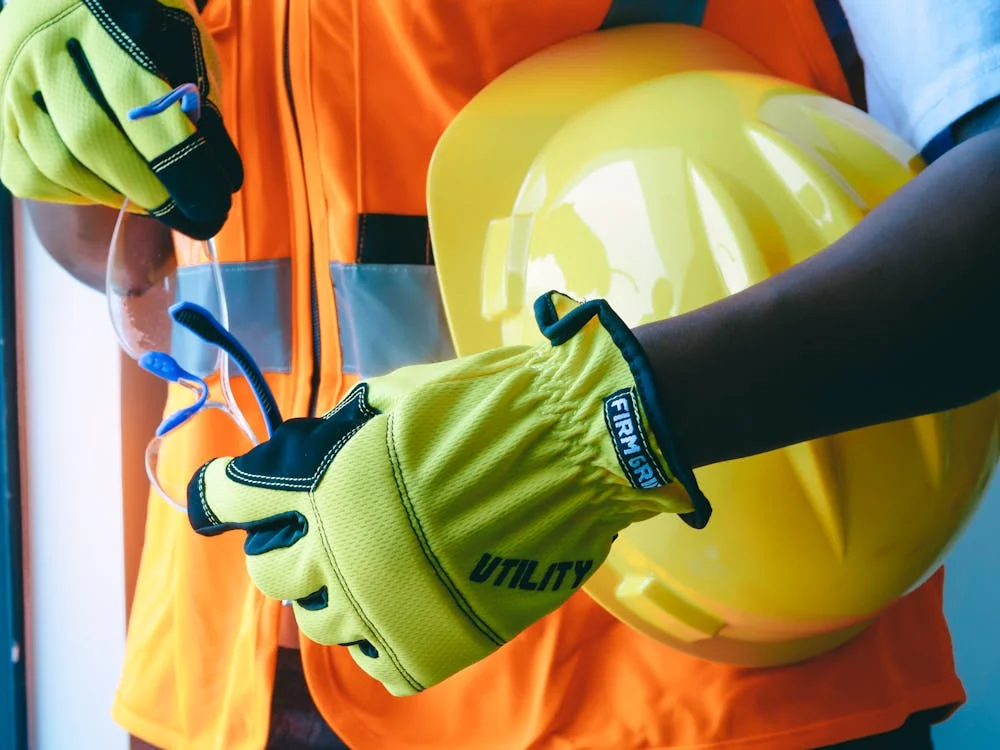
Workwear has always been about safety and functionality, but in 2025, it is also about sustainability. Across industries—from oil & gas in the Middle East to mining in Africa and logistics in South America—procurement managers are under pressure to align with ESG (Environmental, Social, Governance) commitments.
Global investors, governments, and clients increasingly demand that contractors demonstrate not only compliance with safety standards but also environmental responsibility. For distributors and agents, this shift opens a new world of opportunity: providing sustainable, circular, and certified workwear solutions.
This guide explores why sustainability matters, which materials are leading the change, how circular business models work, and what opportunities exist for traders in emerging markets.
Sustainable workwear in 2025 relies on recycled and biodegradable fabrics (like rPET, recycled cotton, and eco-coatings) plus circular business models such as rental and take-back programs. Buyers driven by ESG standards—especially in international projects—prioritize eco-friendly PPE. For distributors, sustainable workwear means entry into high-value projects, differentiation, and long-term client loyalty.
Why Sustainability Standards Are Becoming Critical
-
Global project compliance
Large-scale infrastructure, mining, and energy projects funded by the World Bank, IFC, or EU development funds now include ESG clauses. Contractors who cannot demonstrate eco-friendly procurement risk losing contracts. -
Investor and client pressure
Private investors increasingly follow ESG scoring. A construction firm in Kenya seeking EU investors was required to switch to eco-certified workwear suppliers before securing financing. -
Regulatory frameworks
The EU Green Deal, UN Sustainable Development Goals (SDGs), and local African carbon policies are pushing sustainability requirements into procurement processes. -
Corporate reputation
Contractors, especially those working in oil, mining, or energy, face reputational risk if seen as ignoring sustainability. Supplying eco-workwear is now part of branding and CSR strategy. -
Worker acceptance
Eco-friendly fabrics often come with added benefits—lighter, more breathable, or more durable. Workers who feel the comfort are more likely to adopt PPE willingly.
Real-World Cases
Case #1 – Construction Firm in South Africa
An international investor rejected a tender because the contractor could not prove sustainable sourcing of workwear.
Fix: The company shifted to uniforms made of rPET (recycled polyester from plastic bottles). Within months, it secured the contract, highlighting how workwear directly influences funding.
Case #2 – European Workwear Rental Service
A rental company in Germany offers leasing and recycling programs: workers return used coveralls, which are cleaned, repaired, or recycled into new fibers. This reduced textile waste by 60% and cut client costs.
Case #3 – Mining Client in Zambia
Workers demanded lighter, more breathable gear in hot climates. The supplier introduced recycled cotton blended with polyester, offering both comfort and sustainability. The mining firm used this to highlight ESG compliance in its annual report.
Case #4 – Middle Eastern Oil & Gas Contractor
To qualify for a Saudi Aramco project, the supplier had to demonstrate alignment with ISO 14001 (environmental management systems). Switching to sustainable fabrics helped secure the deal.
Case #5 – Brazilian Logistics Company
Implemented a uniform recycling program: old uniforms are shredded and spun into cleaning cloths for warehouses. Workers appreciated the initiative, and clients recognized the brand as environmentally responsible.
Key Sustainable Workwear Materials
| Material | Sustainability Feature | Use Case |
|---|---|---|
| rPET (Recycled Polyester) | Made from recycled plastic bottles; reduces landfill waste | Coveralls, jackets, hi-vis vests |
| Recycled Cotton | Repurposed textile waste; reduces water use | Shirts, trousers, light uniforms |
| Biodegradable Coatings | Eco-friendly waterproof and flame-retardant finishes | Outerwear, protective jackets |
| Organic Cotton | Pesticide-free, lower environmental impact | Shirts, lightweight uniforms |
| Bio-based Nylon | Derived from renewable sources like castor oil | High-performance workwear |
✅ Pro Tip: Combine durability + recyclability. A garment that lasts longer and can be recycled at the end of life has the strongest ESG impact.
Circular Business Models: From Ownership to Service
-
Rental Models
Instead of purchasing, companies lease uniforms. Providers handle cleaning, repair, and replacement. Common in Europe, but increasingly viable in Africa’s mining and oil industries. -
Take-Back Programs
Distributors collect old uniforms, recycle fibers, and offer discounts for replacements. This helps clients reduce textile waste. -
Repair and Reuse Services
Instead of discarding torn uniforms, providers offer repair workshops. In South America, this is seen as cost-saving and eco-friendly. -
Recycling Partnerships
Collaboration with textile recyclers ensures end-of-life garments are repurposed into insulation, cleaning materials, or regenerated fibers.
Buyer Mistakes to Avoid
- Greenwashing suppliers → Some claim "eco" without certifications. Always request test reports.
- Overlooking durability → Sustainable fabrics must also survive industrial washing and field use.
- Assuming high cost = sustainable → Not all expensive fabrics are eco-certified.
- Ignoring worker feedback → A sustainable product workers refuse to wear is wasted.
- Neglecting certification requirements → ISO 14001, OEKO-TEX, or GRS certification are often mandatory in international tenders.
Buyer FAQ
Q1: Are sustainable workwear fabrics more expensive?
A: Usually 15–30% higher upfront, but longer lifespan and recycling reduce total cost.
Q2: Do workers accept recycled fabrics?
A: Yes. Most workers appreciate the comfort and lightweight feel of rPET or recycled cotton blends.
Q3: Which certifications matter most?
A: GRS (Global Recycled Standard), OEKO-TEX Standard 100, ISO 14001 for suppliers, and SA8000 for social responsibility.
Q4: Can circular models work in Africa or Middle East?
A: Yes, especially in mining and oil industries where large-scale contracts justify rental or take-back programs.
ROI: The Economics of Sustainable Workwear
| Scenario | Traditional Workwear | Sustainable Workwear | Result |
|---|---|---|---|
| Lifespan (coverall) | 6 months | 12–18 months | 2–3x longer use |
| Disposal cost | High (landfill fees) | Lower (recycling offset) | 30% savings |
| ESG project eligibility | Often rejected | Approved | Secures funding |
| Brand reputation | Neutral | Positive CSR impact | Improved contracts |
For contractors, switching to sustainable workwear is not only about compliance—it’s a competitive advantage.
Procurement Checklist
- [ ] rPET or recycled cotton fabrics with GRS certification
- [ ] Biodegradable or eco-friendly coatings
- [ ] Proof of industrial wash durability (50+ cycles)
- [ ] Circular service model options (rental / take-back)
- [ ] ISO 14001 or OEKO-TEX certified supplier
- [ ] Worker trials for comfort and acceptance
Conclusion
Sustainable and circular workwear is no longer a niche—it is becoming the new standard in 2025. For traders and distributors in Africa, the Middle East, South America, and Central Asia, offering eco-certified workwear means:
- Access to high-value projects with strict ESG requirements.
- Differentiation from competitors still focused only on price.
- Stronger client loyalty through long-term, sustainable partnerships.
The construction worker in Ghana, the miner in Zambia, the oil rig operator in Kuwait—they all need the same thing: safe, comfortable, and now sustainable workwear.
📩 Need sustainable & circular workwear for ESG-compliant projects?
Email: [email protected]
🌐 www.workwearsolutions.net
Zion Zhang
Recent Posts
 Antimicrobial & Self-Cleaning Fabrics: Hygiene in Food, Pharma & Healthcare2025年9月20日In industries where hygiene is non-negotiable—food […]
Antimicrobial & Self-Cleaning Fabrics: Hygiene in Food, Pharma & Healthcare2025年9月20日In industries where hygiene is non-negotiable—food […] Cooling Fabrics for Hot Climates: Innovations for Africa & Middle East2025年9月20日Step into a construction site in Dubai at noon or a highway […]
Cooling Fabrics for Hot Climates: Innovations for Africa & Middle East2025年9月20日Step into a construction site in Dubai at noon or a highway […] Smart Workwear: How IoT and Sensors are Changing Safety Gear2025年9月20日Walk onto a modern construction site, an oil rig, or even a […]
Smart Workwear: How IoT and Sensors are Changing Safety Gear2025年9月20日Walk onto a modern construction site, an oil rig, or even a […] Workwear for Central Asian Mining & Energy Projects2025年9月18日From the coal mines of Kazakhstan to the oil fields of […]
Workwear for Central Asian Mining & Energy Projects2025年9月18日From the coal mines of Kazakhstan to the oil fields of […] Workwear for South American Logistics & Warehousing: Comfort and Safety in Long Shifts2025年9月16日South America’s logistics and warehousing industry is […]
Workwear for South American Logistics & Warehousing: Comfort and Safety in Long Shifts2025年9月16日South America’s logistics and warehousing industry is […] Workwear in Africa’s Construction Boom: Demand, Trends, and Opportunities2025年9月16日Walk through any African city today, and you’ll see […]
Workwear in Africa’s Construction Boom: Demand, Trends, and Opportunities2025年9月16日Walk through any African city today, and you’ll see […]
CONTACT US
- Feel free to contact us any time. We will get back to you as soon as we can!
- +86-17330061805
